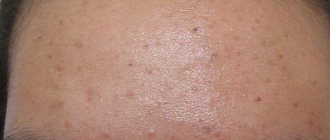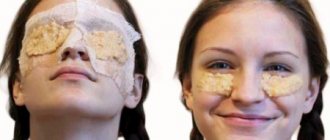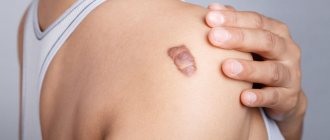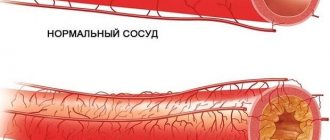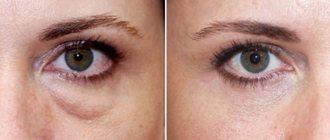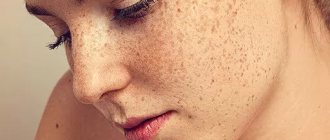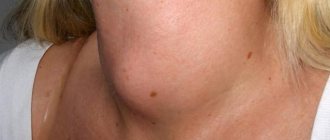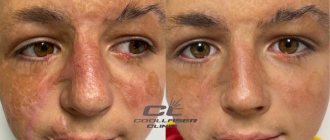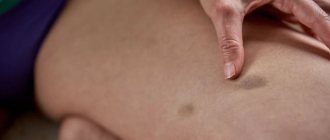Blepharoplasty is a lifting of the upper or lower eyelids, which can tighten the skin in the eye area and restore its tone and former attractiveness. Regardless of the type of plastic surgery or the doctor’s experience, after operations, scars may form after blepharoplasty. We suggest that you familiarize yourself with the peculiarities of the formation of such unpleasant defects, as well as ways to eliminate them.
How are scars formed?
When deciding on any type of blepharoplasty, remember that after making incisions in the epithelium, traces always remain. This is explained by the fact that no matter what the operation, after surgical manipulations there are always stitches and scar tissue is formed. But what the scar will look like after lower blepharoplasty depends on a number of factors:
- correct implementation of the plastic surgeon’s recommendations regarding skin care;
- features of human physiology;
- skill of the plastic surgeon who performed the plastic surgery.
Usually, after blepharoplasty, small scars remain in the form of a thin light strip located in the fold of the eye epithelium. Thanks to the use of modern techniques and discreet incisions, scars become less noticeable to the unprofessional eye.
Scars become a patient's problem only in case of improper care or non-compliance with medical recommendations. Then small traces from operations can lead to an increase in connective tissue and the formation of colloidal scars.
We invite you to see photos of scars after blepharoplasty
Doctors' recommendations for preventing scars
An important rule that helps eliminate unwanted consequences after surgery is to follow the recommendations of the plastic surgeon during the rehabilitation period:
- In the first week after surgery, you should stop reading your favorite books, magazines, and watching television programs;
- do not stretch or rub the epithelium next to the marks from the operation;
- try to avoid exposure to ultraviolet rays on your face as much as possible, wear glasses for protection;
- do not visit solariums, saunas and steam baths (at least 2 weeks after surgery);
- reduce the level of physical activity on the body;
- When taking a bath, try to use warm (preferably cool) water; the seams should not be wet;
- Minimize salt intake to avoid swelling.
The doctor will also tell you about the care products that need to be used during the rehabilitation period.
How long will it take for scars to heal?
After blepharoplasty, the patient is usually sent home after 3-5 hours. This is allowed only if there are no complications. The next day after surgery, pain, swelling, bruises and redness in the eye area may appear. Such symptoms are normal and occur due to damage to nerves and blood vessels. To eliminate discomfort, it is recommended to apply cold compresses to the affected areas.
Removal of postoperative sutures is performed on days 5-6, but swelling and bruising may remain for another two weeks. Keloid scars after blepharoplasty take a long time to heal. This happens in several phases:
- Exudative stage. Its duration is 6-8 days. This phase is considered inflammatory, since the eyelids remain red and swelling is observed. During this period, it is recommended to adhere to the rules of seam hygiene. Physical activity is not allowed, as it will lead to the sutures coming apart and causing bleeding. It is also important not to strain your eyes at this stage.
- Granulation of seams. This period is observed for the first 7-14 days after surgical procedures. At the site of the scar, new tissue appears, elastin and collagen fibers are formed. Scars are usually pink in color.
- Scar formation. Scars appear 30-90 days after eyelid surgery. The seam structure becomes more dense. The scar tissue is lightened and smoothed out. This stage is the most important, since if all rehabilitation rules are not followed, hypertrophic or keloid scars will occur.
- The scar fully matures 4-9 months after eyelid surgery. The scar thickens, turns white, evens out, and becomes invisible.
If all medical recommendations are followed, scar healing occurs painlessly for the patient and unnoticed by others.
The location of the scars depends on the type of lift. After plastic surgery of the lower eyelids, they are formed along the visual organ under the ciliary edge. With complete regeneration, they are no different from the structure of normal epithelium. The transconjunctival technique allows you to hide scars, since the incisions are made from the inside. With upper eyelid surgery, the scars are located in the crease above the eyes; they become invisible 14 days after the operation.
You can learn more about scars after blepharoplasty from the video:
How does laser resurfacing work?
The procedure is carried out in several stages and does not require special preparation. Before coming to the clinic, it is recommended to take Retinol for several days. The medication thins the epithelium and rejuvenates it.
2 weeks before the procedure, stop taking antibiotics and antispasmodics. 3 days before the procedure, stop drinking alcohol and avoid active sun exposure.
Before the procedure, take blood and urine tests. Diagnostics is necessary to exclude contraindications.
Execution steps:
- Cleansing from cosmetics. Disinfection of the treated area. This is necessary to prevent infection and the development of an infectious process.
- The cosmetologist applies an anesthetic cream so that the patient does not feel anything during the procedure and for some period after it.
- The laser is brought to the eyelids and affects the necessary areas. It is divided into hundreds of small rays, making microscopic holes - nanoperforation. There are no incisions, the impact is only on the connective tissue. The impact on problem areas is carried out within 20–30 minutes. The power of the energy flow and the duration of the pulses are selected individually. This depends on the extent of the damage.
- The procedure ends with treating the eyelid with a soothing cream.
After the procedure, the eyelid remains red for 1–3 days. This is a temporary phenomenon and goes away quickly. After the procedure, it is strongly recommended to follow the prescribed recommendations. Avoid being in direct sunlight and use protective cream.
In the first 2 weeks, the skin requires careful and careful care.
How to smear scars after blepharoplasty
To avoid overgrowth of connective tissues and to form smooth skin at the scar site, it is recommended to use special silicone-based ointments for scars after blepharoplasty.
Let's consider the most popular means and the principle of their action.
| Name of the drug | Operating principle |
| Dermatix Gel | The ointment is based on silicone, helps soften connective tissues, preventing the formation of uneven, rough scars. Perfectly regulates the water balance of the epithelium. |
| Contractubex | The cream base is allontoin. This is a substance that helps in healing and restoration of damaged tissue. The gel helps soften and moisturize connective tissue and eliminate discomfort. |
| Kelofibrase | The gel, based on components of natural origin, has an anti-inflammatory and moisturizing effect. Helps improve blood circulation in the dermis, normalizes water balance, and this helps in eliminating scar tissue. |
| Scarguard | Liquid structure composition containing silicone. Apply with a special brush. After drying on the eyelids, the drug creates a film layer that retains moisture, which will be needed to soften the scars. |
| Clearvin | Ointment based on herbal ingredients. It contains extracts of medicinal cultures. The product helps in restoration, nutrition, and improvement of blood circulation in the epithelium. |
| Zeraderm | Has a silicone base. Perfectly saturates the epithelium with oxygen, fills it with vitamins, and guarantees rapid recovery. |
| Sledotsid | Excellently relieves inflammation and guarantees tissue regeneration. To achieve the desired result, the composition is applied at least 2 times a day. |
Treatment of scars after blepharoplasty
There are many ways to treat scars caused by blepharoplasty. Let's look at the most popular:
- Laser resurfacing of scars after blepharoplasty. The process of tissue resurfacing after eyelid surgery is carried out using innovative erbium lasers. To completely eliminate scars, you will need from 5 to 7 sessions. After the procedures there is no need for rehabilitation, there are no unpleasant sensations during the session, and the risk of burns is zero.
- Excision of scar tissue. This method is used only in extreme cases, when the scars are too large and very noticeable. Thanks to excision, it will be possible to completely get rid of scars. You should consult your doctor about the possibility of scar excision.
- Use of cryotherapy. This method is based on the use of liquid nitrogen at minimally low temperatures. The technique allows you to lighten the scar and make it thin.
Before deciding to use one or another method of treating scars, it is recommended to first consult with your doctor.
In the photo, a keloid scar is being polished after blepharoplasty:
The effectiveness of laser eyelid resurfacing
The treatment is gentle with minimal impact. Laser eyelid resurfacing after blepharoplasty does not just remove scars, it reduces puffiness, eliminates wrinkles and tightens sagging skin.
The manipulation stimulates the formation of collagen in the deep layers of the epidermis. This is what provides an amazing rejuvenation effect and scar removal.
The procedure is effective and requires long-term rehabilitation. After grinding, it is recommended to apply a moisturizing ointment and do not remove any crusts that have formed.
Injection methods for treating scars
Medicinal injections are one of the most effective methods for eliminating scars. The most popular methods:
- Use of corticosteroids. The substances help reduce the proliferation of connective tissues because they reduce collagen synthesis. The most popular steroid is triamcinolone acetate. It is injected into the scar site after 4-6 weeks. Complications such as muscle atrophy and pigmentation are possible.
- Immunomodulators. A relatively new technique. Interferon is injected into the scar tissue. The procedure is prescribed in sessions every other day for 14 days. After completing this course, 1 injection is given once every 7 days.
- Treatment of scars with blepharoplasty with Botox. The use of botulinum toxin injections helps reduce postoperative scars and makes them thinner.
To achieve the desired result, you need to contact experienced specialists who have encountered similar problems.
Keloid scars: causes of occurrence
During the wound healing process, fibroblasts begin to actively synthesize collagen. Sometimes, for some reason, fibroblasts begin to produce more collagen than is necessary for the normal wound healing process. In this case, the scar begins to grow, forming a keloid. According to studies, collagen synthesis in keloid scars is 20 times higher than in normal scars.
Keloids can develop from a variety of skin injuries, including - → surgical incisions, → wounds on the skin after injury, → vaccination injections, → acne (pimples and pimples), chicken pox, → piercings of various parts of the body (including piercings of the earlobes).
How to remove scars after blepharoplasty using traditional methods?
If after blepharoplasty there are long scars, and you are not ready for radical methods, you can use the traditional methods presented in the table:
| Product name | Cooking method |
| Herbal collection | Take dry chamomile, nettle leaves, yarrow, calendula, St. John's wort in equal parts. Pour water (250 ml of boiling water) over the herbs and leave in a heat bath for 65 minutes. After this, the composition is filtered. A piece of linen cloth is soaked in the prepared preparation and applied to the scars. The lotion is kept for 2 hours. |
| Wax-olive mixture | Olive oil (220 ml) is poured into a pan, 50 g of high-quality beeswax is added. The mixture is placed on low heat for 10-12 minutes. After this, the composition is cooled, a linen or cotton napkin is soaked in it, and applied to the scars. The procedure is carried out at least twice a day for 60 days. |
| Parsley tincture | Chop the parsley and pour boiling water (1 cup). The product is left for 15 minutes, then the composition is frozen, divided into small portions. Ice cubes are used to wipe the scar twice a day. Duration of therapy is 3 months. |
| Marshmallow tincture | Finely chop 15 g of marshmallow root, add 250 ml of cold water and leave for 5-7 hours. After the specified time, use the infusion to treat scars every 3-4 hours. In the absence of marshmallow, it is replaced with mint or lemon balm. |
| Melon mask | Take 12-20 melon seeds, 2 eggshells, 5 ml of olive oil. The seeds are dried, crushed, then all components are mixed. The prepared mask is applied to the scar and wrapped with a bandage. The course of treatment is 1 month. |
It is recommended to use traditional medicine only after consulting a doctor. They do not guarantee a quick result, but after a course of treatment they can reduce the appearance of scars.
Complications and side effects
The following side effects are unlikely to occur: erythema, scars remaining in place, skin hyperpigmentation. Residual erythema may persist for 3–4 months after completion of the course. Redness is explained by an inflammatory reaction and insufficient maturity of the new epithelium.
Skin hyperpigmentation is a problem for dark-skinned women. The risk of scar enlargement is higher if the doctor is incompetent and incorrectly set the depth of exposure to laser radiation.
Possible complications:
- burns;
- infection;
- allergic dermatitis;
- photodermatitis.
The burns go away within a few days. To speed up recovery, lubricate with Panthenol. Severe burns are very rare after laser resurfacing. In this situation, you should not treat yourself; it is better to immediately consult a doctor.
A severe burn is manifested by pain, redness, the wound oozes, and it is difficult for a person to open and close his eyes.
Reviews from patients about the treatment of scars after blepharoplasty
Review 1, Elena, 34 years old, Moscow:
“After blepharoplasty there were terrible scars. At first I used Contractubex, but it didn’t help me much. The specialist who performed my operation advised me to try laser resurfacing. I've only had 5 sessions and the results are already amazing. If you also have the same problem, don’t be afraid - get laser resurfacing and your appearance will only get better.”
Review 2, Margarita, 45 years old, Murmansk:
“I had blepharoplasty with one of the best surgeons in the city, but the scars still remained. I tried all sorts of ointments, even folk remedies, but the scars were noticeable. On the Internet I came across injection techniques - the administration of corticosteroids. Having received the doctor’s approval, I signed up for manipulation. The process is long and the results are not immediately visible. But after a month, the scars became less noticeable. The technique really works. I recommend!"
Contraindications
Laser resurfacing after blepharoplasty is not performed for women with the following absolute contraindications:
- HIV;
- AIDS;
- epilepsy;
- diseases associated with poor blood clotting;
- diabetes;
- age over 70 years;
- tendency to allergies to laser radiation.
It is not carried out until conditions such as inflammation, herpes, pregnancy, lactation, dehydration, and oncology are eliminated.
The cosmetic procedure is not performed in cases of exacerbation of allergies or dermatological diseases.
